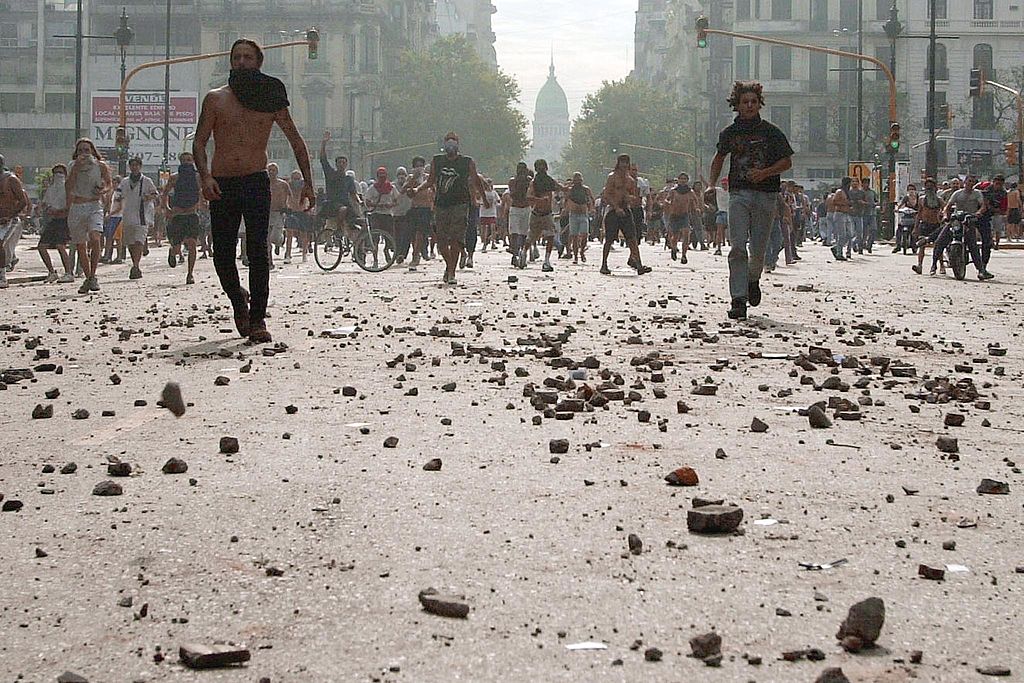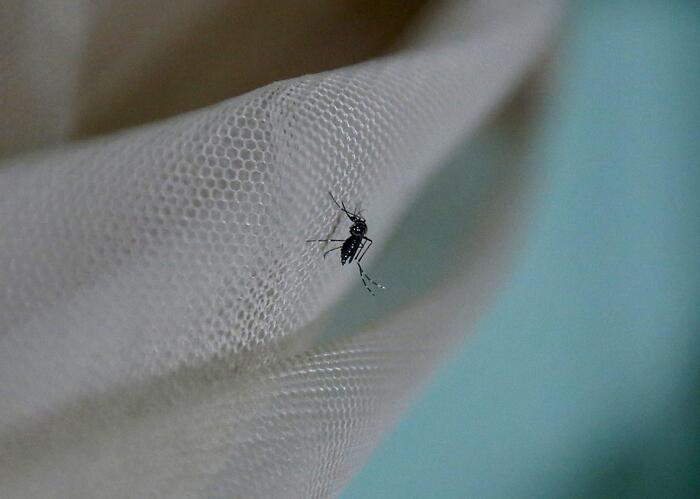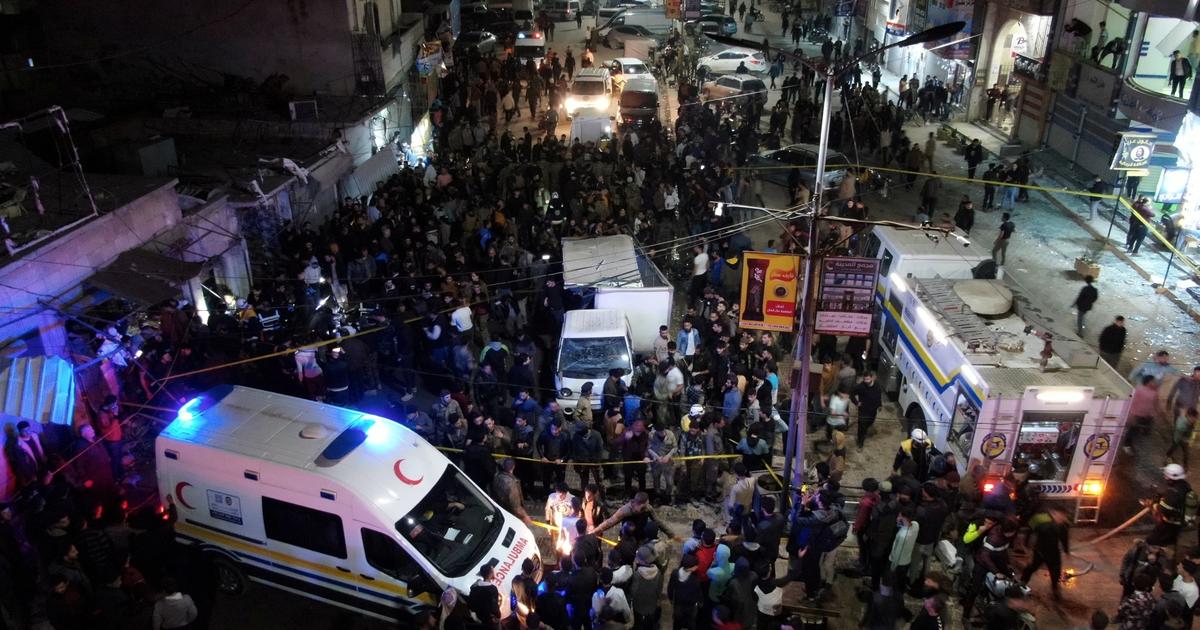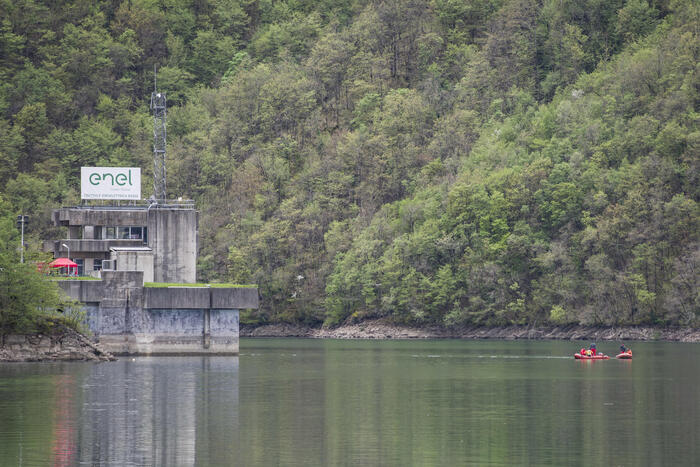The ghost of the corralito in Argentina, 15 years later 3:50
(CNN Spanish) -
Nothing in Argentina would be the same again after the so-called "corralito".
After long years of recession, growing foreign debt and unemployment, on December 3, 2001, the government of then-president Fernando De la Rúa imposed strong restrictions on money withdrawals from banks - which would be known as the "corralito" - to avoid a massive withdrawal that will lead to the collapse of the financial system.
The measure effectively froze people's deposits, slowed down payment chains and further deepened the economic crisis in which the country was embroiled.
People protested in the streets in a massive way, there was looting and the Government repressed with violence: 39 people died, according to the Argentine Human Rights Secretariat.
Fernandez vs.
Fernandez?
Agreements and differences between the president and the vice president of Argentina
De la Rúa would end up resigning on December 20, starting a political crisis built on the economic debacle.
Twenty years have passed since the corralito, and the mere mention of the word continues to shake Argentines and rekindle the memory of one of the most difficult stages in the country's history.
advertising
How the corralito was arrived at in Argentina
At the head of the Alliance for Work, Justice and Education, a government coalition led by the Radical Civic Union, De la Rúa won the 1999 presidential elections with 48.37% of the votes, ending the 10 years of the Peronist government of Carlos Menem.
He inherited a difficult situation: the economy had been in recession for a year (with a fall of 3.38% in 1999, according to the World Bank, and would fall again in 2000 and 2001), unemployment reached 14.3% in 1999, according to INDEC data, and the external debt stood at about US $ 150,000 million or 55% of GDP.
The political scene was not easy either.
It was very difficult for the coalition participants to find meeting points, and just 11 months after assuming the presidency, De la Rúa had to deal with the resignation of his vice president, Carlos "Chacho" Álvarez and in 2001 with the defeat in the midterm legislative elections.
That same year, without being able to respond to the many problems that afflicted the country and given the rise in credit, the Government turned to the International Monetary Fund (IMF) to face the external debt and contain the deficit, while trying to cut the expenses, in a context of enormous mistrust in the country.
The then president of Argentina, Fernando de la Rua (right) and his economy minister, Domingo Cavallo.
(Credit: MARCOS ADANDIA / AFP via Getty Images)
These movements deepened the economic crisis, amidst the pressure generated by the payments and interests of the foreign debt, and people began to withdraw their savings from the banks while the fear of a defaulting on the debt, or
default
, grew
.
The De la Rúa government then announced the corralito, through decree 1570/2001 prepared by the Minister of Economy, Domingo Cavallo.
The decree was published on Saturday, December 1, so the effects began to be felt on Monday, December 3, when the banks finally opened in the context of the new restrictions.
In its article 2, the decree allowed savers to withdraw up to 250 pesos or US $ 250 a week (at that time, due to the Austral Convertibility Law, one Argentine peso was equivalent to one dollar) from their accounts opened in banks and other financial institutions, and also limited money transfers abroad.
How big had the rush been to withdraw the deposits?
According to a 2002 report from the Professional Council of Economic Sciences of the City of Buenos Aires, in January 2001 there was the equivalent of US $ 85,308 million in bank deposits in Argentina (approximately 32,603 million pesos and US $ 52,705 million).
In December, when corralito began, deposits had fallen to the equivalent of US $ 65,380 million (18,594 million pesos and US $ 46,786 million).
In other words, funds of US $ 19,928 million had been withdrawn.
What happen after
Different sectors of Argentine society marched to protest against the administration, the unions called for a strike and looting was reported throughout the country.
The outbreak peaked on December 19, and the government made an even more drastic decision.
"Acts of violence have occurred in the country that endanger people and property, and create a picture of internal commotion. I want to inform you that I have decreed a state of siege throughout the national territory," De la Rúa said that day.
An image of the protests in Buenos Aires against President De la Rua, on December 20, 2001. (Credit: ALI BURAFI / AFP via Getty Images)
The president, already without political support and in the midst of chaos, resigned a day later.
He left the Casa Rosada by helicopter while on the ground tens of thousands protested and clashed with the police, in an image that continues to generate chills in Argentines.
He was succeeded in the presidency by Adolfo Rodríquez Saá, then governor of San Luis, chosen by the Congress of the Argentine Nation to replace De la Rúa.
He quickly declared the
default
, that is, the default on the debt, which was already anticipated.
But the demonstrations did not stop and after seven days in government, he also resigned.
Congress finally elected then-senator Eduardo Duhalde as president, to complete the term until 2003. Duhalde, who had been defeated by De la Rúa in 1999, is remembered for navigating a country that seemed to have hit rock bottom and for dismantling the so-called " convertibility ", whereby one Argentine peso was equivalent by law to one US dollar.
A police officer, dressed in civilian clothes and armed, advances in front of a burned shop on the night of December 20, 2001. (Credit: DANIEL GARCIA / AFP via Getty Images)
The measure therefore meant a strong and almost immediate devaluation of the currency, which went on to trade at three pesos per dollar in a few weeks.
Thus, in 2002, in the well of the economic and political crisis, the country had 21% unemployment, 57.5% poverty, and an external debt that reached 160% of its GDP.
Duhalde was followed in 2003 by Néstor Kirchner, governor of Santa Cruz, in atomized elections marked by the rejection of the old parties, in which, however, high levels of participation were registered.
Kirchner obtained only 22.25% of the votes and achieved second place in the first round, behind former president Menem, who achieved 24.45%.
But, anticipating a defeat in the second round, Menem withdrew from the electoral contest, leaving the victory to Kirchner and beginning a decade of recovery and growth, without completely solving the political and economic tensions.
With information from Ignacio Grimaldi
Playpen









